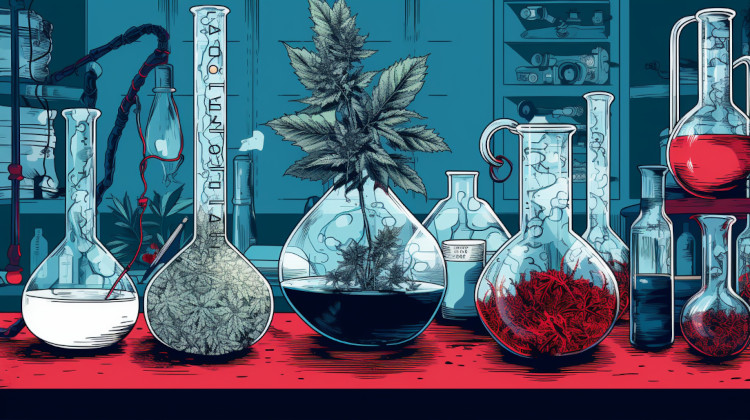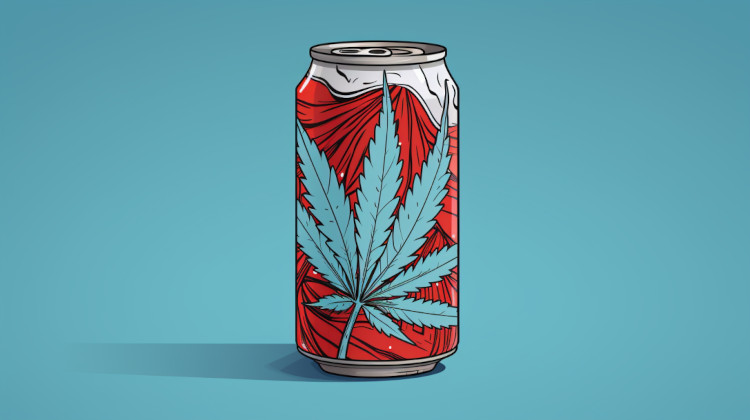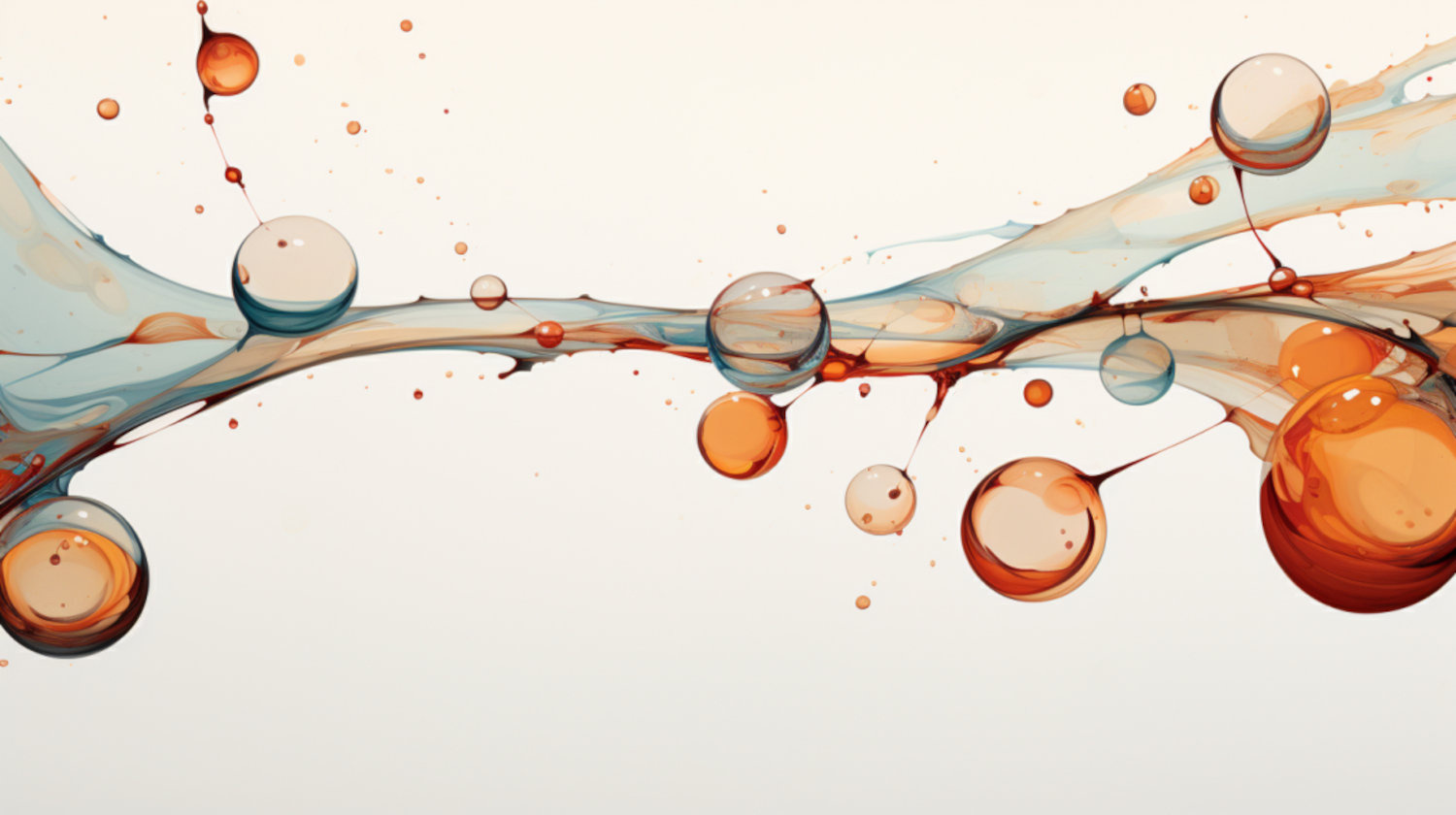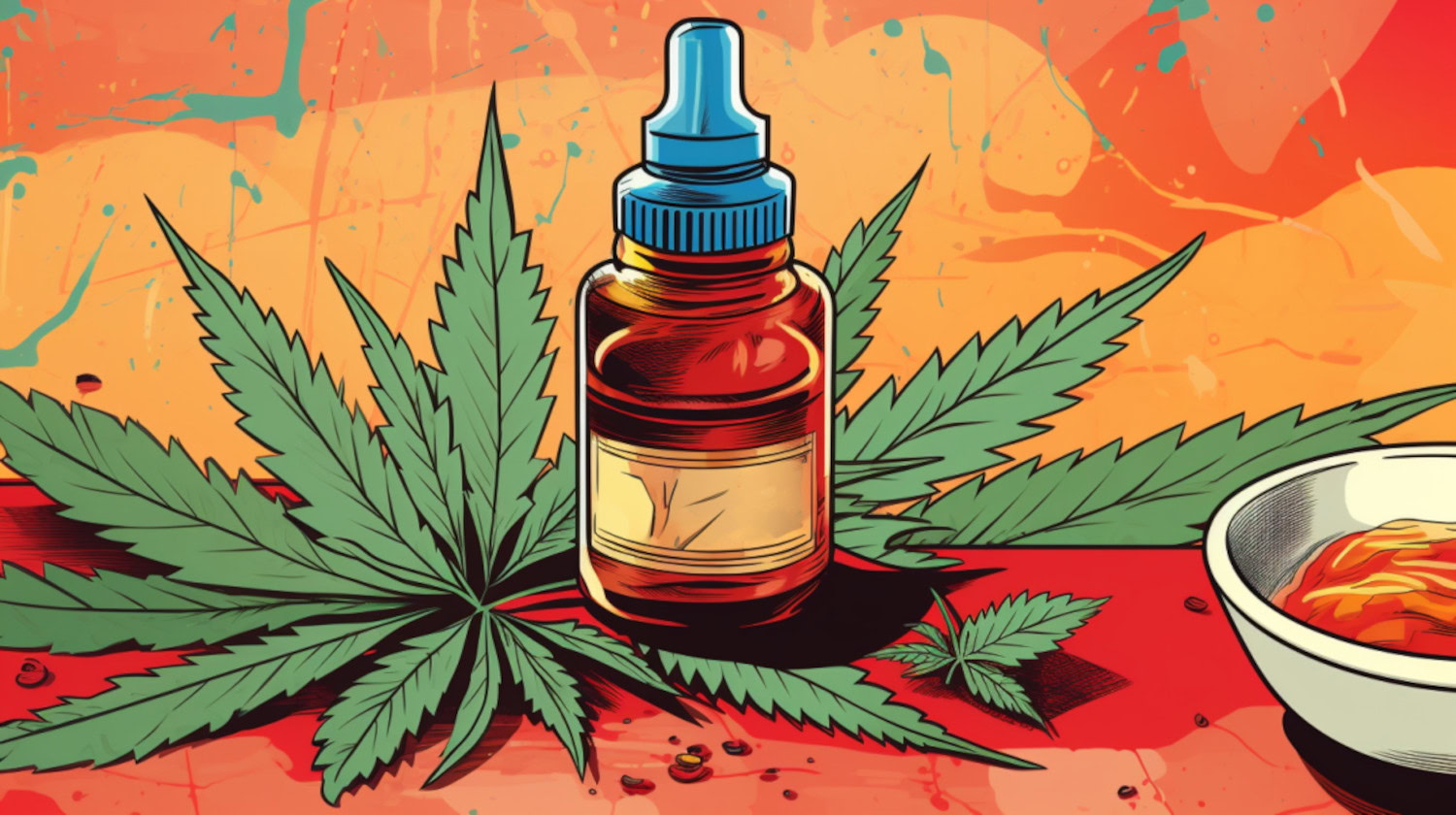Over the last few years, CBD has become a staple ingredient in many cannabis products. In 2021, sales reached 5.3 billion dollars. The non-intoxicating cannabinoid has a long list of medicinal benefits, making it a potential health aid for various ailments.
One study found that 62% of CBD users used these products for medical reasons like pain, depression, and anxiety.1
The onset time of CBD products ranges from a few moments with methods like smoking to up to a few hours with edibles. Oils and tinctures are commonly infused CBD products as they are discreet, and effects occur within 5-15 minutes. However, researchers note that these oil-based products result in low bioavailability once ingested, making it challenging to maximize CBD's potential therapeutic effects in the body.2
While rapid onset time isn’t as important to medical cannabis patients as the longevity of the effects, is there a way to have both while increasing its bioavailability?
Nano, nanotechnology, or nanoemulsion are terms associated with CBD products recently introduced as a potential solution to the delayed onset time.3 But what exactly is nano CBD?
What is Nano CBD?
Nano CBD is the cannabinoid cannabidiol (CBD) broken down into tiny particles using ultrasonic processors and then stabilized with a mixture of surfactants and emulsifiers.2 Since CBD is a naturally fat-soluble molecule, its bioavailability is limited in the body, and CBD is also challenging to infuse into water-based products.
Ultrasonic processors use waves to agitate particles like CBD, using the vibration to break them apart. They become so small that they're believed to promote better bioavailability than non-nano CBD products, meaning the body more readily absorbs them. This process creates nanoliposomes or nanoscale bilayer lipid vesicles, an alternative drug delivery approach that facilitates faster absorption into the skin.4
Self-emulsification is another method that is possible to develop nano CBD.5 Self-emulsifying drug delivery systems, or SEDDS, “are lipid-based nanosystems that can be easily formed by simply mixing drug, lipids, and a relatively high concentration of emulsifiers, usually with one or more hydrophilic co-solvents/co-emulsifiers. This mixture produces oil-in-water emulsions or microemulsions upon gentle agitation, followed by dilution with an aqueous phase.”6
Nano CBD does not taste or smell different from regular CBD. The look, however, is different. The smaller particles form a fine powder before being suspended in liquid.
Not all nano CBD is created equal. The ingredients of nano CBD vary depending on the brand and manufacturer. Including CBD, some core ingredients tend to consist of:
- Natural Flavoring
- Coconut Oil (or another natural oil)
- Stevia
- Vitamin B-12
- CoQ10
- Ashwagandha
- Rhodiola
- L-Theanine
- Organic Caffeine
Data suggests some of these ingredients may help relieve pain, sleeplessness, anxiety, and numerous other ailments.7,8,9
How is Nano CBD Different from Regular CBD?

There are a few differences between nano CBD vs. regular CBD.
Nano CBD uses ultrasonic processors and an emulsification process to break down and stabilize the molecules, while traditional CBD is typically made using a procedure that includes CO2, ethanol, or oil to isolate the molecule. These isolates can be infused into various edibles and tinctures or be made into concentrates for vapes or dabbing.
Consuming CBD this way is fine, although the cannabinoid itself is fat-soluble and not as easily dissolvable in water, limiting its potential therapeutic effects with low bioavailability. However, researchers have found that nano CBD improved CBD’s bioavailability by 65%. This change isn’t considered significant enhanced absorption in the intestines 3x. One study found that these nano molecules are more easily absorbed into the bloodstream, which may speed up the onset time as well.10,11
Nano CBD can be made from both hemp and high-THC cannabis. While isolated CBD can be found in almost all cannabis infusions, Nano CBD is usually only found in edibles, topicals, and tinctures.
What are the Benefits of Nano CBD?
Nano CBD has risen in popularity due to it having all the same benefits of CBD while increasing the body’s ability to absorb it and speeding up the onset time. These two factors can benefit consumers, both recreational and medical.
The rapid onset time can reduce the time a patient waits for relief from an ailment. At the same time, some brands say the effects taper off within a few hours, not causing as heavy a feeling as traditional cannabis edibles. However, this factor has yet to be studied.
The increased bioavailability of the nano cannabinoid can increase the body’s ability to experience the potential therapeutic benefits of each dosage. This facet may allow consumers to use less but receive the same or more significant benefits.
CBD is known for various medicinal effects and uses, but nano CBD is a newer option that is just starting to be studied. A study done in 2022 looked at the effects of nano CBD on rats with Alzheimer's disease. The cannabinoid nanoemulsion was found to increase learning and memory by increasing CB1 and CB2 levels, the receptors responsible for the intoxicating and medicinal effects.12
Nano CBD is almost any infusible product but has risen in popularity among beverages in the edible category. Since the molecules are broken down into smaller particles, they become more soluble, making them ideal for drinkables. In 2021, one report sized the cannabis beverage market at $574 billion.
Transdermals are another product category where the benefits of nano CBD may make it a more suitable cannabinoid. One study reported that nano CBD is a “viable, non-invasive, and cost-effective” option for transdermals, especially since CBD has anti-microbial and anti-viral properties.13
What are the Possible Risks and Side Effects of Nano CBD?

Similar to most emerging minor cannabinoids, many claims about the effects of new cannabis products, like nano CBD, have yet to be studied in-depth in more than a few research settings.
However, unless a medical issue or medication conflicts with CBD, most anecdotal evidence shows that nano or otherwise, CBD products produce a range of effects, and the adverse risks tend to be rare and mild. Risks are dose-dependent and include possible liver damage, sedating effects, and negative impacts on mental health.
Nano CBD does increase the bioavailability of CBD in the body, so it may be possible to increase the risk of potential overconsumption. That said, doses of up to 1500 mg of CBD are generally well tolerated in humans.14 That dose for the average person is difficult to reach in one sitting, considering the usual dose per edible – high-THC, or hemp – is 10mg. Other research has indicated that the toxic dose for CBD would be in the neighborhood of 20,000mg. One study noted that SEDDS, a type of nano CBD typically found in capsule form, can potentially irritate the gastrointestinal tract.15
Like all cannabis products, nano CBD should be taken mindfully and responsibly.
The U.S. Food and Drug Association (FDA) has not verified or approved any nano CBD drugs. The administration issued various statements, including:
"Over the past several years, the FDA has issued several warning letters to firms that market unapproved new drugs that allegedly contain cannabidiol (CBD). As part of these actions, FDA has tested the chemical content of cannabinoid compounds in some of the products, and many were found to not contain the levels of CBD they claimed to contain."
Most importantly, the FDA added, "It is important to note that these products are not approved by FDA for the diagnosis, cure, mitigation, treatment, or prevention of any disease."
Following these statements, The FDA has issued several warning letters to CBD companies after product tests didn't find CBD levels claimed on the label. They added that consumers should beware buying or using any such products.
Nano CBD Reviews: What Do Consumers Say?
While nanotechnology has brought on a new category of cannabis products, it has rapidly become accessible in most dispensaries and hemp retailers. Nano CBD product reviews have started to appear on some blogs and have generally good remarks.
Kanha, a staple edible brand from Sunderstorm, was among the first to introduce its Nano CBD gummies. One review from an avid edible consumer noted that of all the edibles boasting rapid onset time, Kanha was the only one that delivered on its promise while still maintaining flavor and significant effects.
Nanotechnology can also be applied to THC. Dr. Norms is known for its cookies and rice-crispy edibles. They also released a rapid onset version of their high THC cookies and cream product. One user noted it took effect in half the time as a traditional edible while also tasting delicious and delivering an all-over body effect.
Tonik is a brand that offers high-THC liquid shots. These are affordable options for high-dose users looking for quick and potent effects. While there are only a handful of reviews, they all are 5/5 stars, with users praising its long-lasting results.
Next to edibles, nano CBD topicals are supposed to be one of the best ways to utilize the technology. ICaria offers a hemp-based nano CBD roller that consumers can purchase online. The product has a 4.6/5 star average, and users who love it say it’s a quick way to relieve their aches and pains.
The results and effects of Nano CBD will depend on various aspects like the mode of consumption, tolerance level, dosage, and other internal and external factors. If you’re consuming Nano CBD through edibles or tinctures, starting with the lowest dose you’ll need and are comfortable with taking is best.
Topicals will not cause any intoxicating effects, so you can apply them liberally directly to the skin.

Is nano CBD safe?
While nano CBD isn’t FDA-approved, it has been infused in many cannabis products, and there have been no reports of severe adverse side effects yet. CBD and Nano CBD do pose risks of stomach and liver issues, drowsiness, and effects on mental health. These effects are typically dose-dependent, seen in high dose consumption, mild, and rare.
Does nano CBD have FDA approval?
No, nano CBD is not FDA-approved.
Where can I buy nano CBD oil?
You can purchase nano CBD in legal dispensaries, wellness stores, and online retailers, depending on the laws and regulations in your state.
References
- Corroon, Jamie, and Joy A. Phillips. 2018. “A Cross-Sectional Study of Cannabidiol Users.” Cannabis and Cannabinoid Research 3 (1): 152–61. https://doi.org/10.1089/can.2018.0006.
↩︎ - Lewińska, Agnieszka. 2021. “Optimizing the Process Design of Oil-In-Water Nanoemulsion for Delivering Poorly Soluble Cannabidiol Oil.” Processes 9 (7): 1180. https://doi.org/10.3390/pr9071180.
↩︎ - Knaub K, Sartorius T, Dharsono T, Wacker R, Wilhelm M, Schön C. A Novel Self-Emulsifying Drug Delivery System (SEDDS) Based on VESIsorb® Formulation Technology Improving the Oral Bioavailability of Cannabidiol in Healthy Subjects. Molecules. 2019;24(16):2967. Published 2019 Aug 16. doi:10.3390/molecules24162967
↩︎ - Aguilar-Pérez KM, Avilés-Castrillo JI, Medina DI, Parra-Saldivar R, Iqbal HMN. Insight Into Nanoliposomes as Smart Nanocarriers for Greening the Twenty-First Century Biomedical Settings. Front Bioeng Biotechnol. 2020;8:579536. Published 2020 Dec 15. doi:10.3389/fbioe.2020.579536
↩︎ - Stella B, Baratta F, Della Pepa C, Arpicco S, Gastaldi D, Dosio F. Cannabinoid Formulations and Delivery Systems: Current and Future Options to Treat Pain. Drugs. 2021;81(13):1513-1557. doi:https://doi.org/10.1007/s40265-021-01579-x
↩︎ - Neslihan Gursoy R, Benita S. Self-emulsifying drug delivery systems (SEDDS) for improved oral delivery of lipophilic drugs. Biomedicine & Pharmacotherapy. 2004;58(3):173-182. doi:https://doi.org/10.1016/j.biopha.2004.02.001
↩︎ - Peteliuk V, Rybchuk L, Bayliak M, Storey KB, Lushchak O. Natural sweetener Stevia rebaudiana: Functionalities, health benefits and potential risks. EXCLI J. 2021;20:1412-1430. Published 2021 Sep 22. doi:10.17179/excli2021-4211
↩︎ - Singh N, Bhalla M, de Jager P, Gilca M. An overview on ashwagandha: a Rasayana (rejuvenator) of Ayurveda. Afr J Tradit Complement Altern Med. 2011;8(5 Suppl):208-213. doi:10.4314/ajtcam.v8i5S.9
↩︎ - Baba Y, Inagaki S, Nakagawa S, Kaneko T, Kobayashi M, Takihara T. Effects of l-Theanine on Cognitive Function in Middle-Aged and Older Subjects: A Randomized Placebo-Controlled Study. J Med Food. 2021;24(4):333-341. doi:10.1089/jmf.2020.4803
↩︎ - Nakano Y, Tajima M, Sugiyama E, Sato V, Sato H. Development of a Novel Nanoemulsion Formulation to Improve Intestinal Absorption of Cannabidiol. Medical Cannabis and Cannabinoids. 2019;2(1):35-42. doi:https://doi.org/10.1159/000497361
↩︎ - Grifoni L, Vanti G, Donato R, Sacco C, Bilia AR. Promising Nanocarriers to Enhance Solubility and Bioavailability of Cannabidiol for a Plethora of Therapeutic Opportunities. Molecules. 2022;27(18):6070. doi:https://doi.org/10.3390/molecules27186070
↩︎ - Amini M, Abdolmaleki Z. The Effect of Cannabidiol Coated by Nano-Chitosan on Learning and Memory, Hippocampal CB1 and CB2 Levels, and Amyloid Plaques in an Alzheimer’s Disease Rat Model. Neuropsychobiology. 2021;81(3):1-13. doi:https://doi.org/10.1159/000519534
↩︎ - Shaker DS, Ishak RAH, Ghoneim A, Elhuoni MA. Nanoemulsion: A Review on Mechanisms for the Transdermal Delivery of Hydrophobic and Hydrophilic Drugs. Scientia Pharmaceutica. 2019;87(3):17. doi:https://doi.org/10.3390/scipharm87030017
↩︎ - Iffland K, Grotenhermen F. An Update on Safety and Side Effects of Cannabidiol: A Review of Clinical Data and Relevant Animal Studies. Cannabis and Cannabinoid Research. 2017;2(1):139-154. doi:https://doi.org/10.1089/can.2016.0034
↩︎ - Millar SA, Maguire RF, Yates AS, O’Sullivan SE. Towards Better Delivery of Cannabidiol (CBD). Pharmaceuticals. 2020;13(9):219. doi:https://doi.org/10.3390/ph13090219
↩︎
The information in this article and any included images or charts are for educational purposes only. This information is neither a substitute for, nor does it replace, professional legal advice or medical advice, diagnosis, or treatment. If you have any concerns or questions about laws, regulations, or your health, you should always consult with an attorney, physician or other licensed professional.




